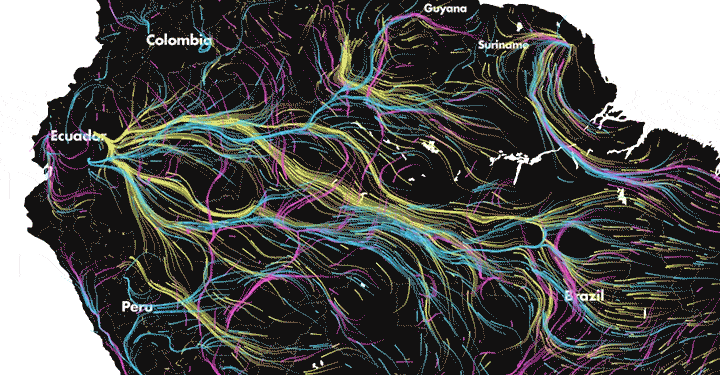
Aside from direct human activities like logging or human activities, the biggest threat to animals’ habitats all over the world is climate change. Faced with hotter temperatures outside their comfort zones, many species of mammals, birds or amphibians find themselves forced to get the hell outta Dodge — preferably northwards or to higher elevations.
“Winter is coming!” Oh wait…
Inspired by the van Goghesque Earth wind map, which visualizes in real-time wind, temperature, and sea level pressure, Dan Majka used data from two studies to construct the paths mammals need to take to arrive in more suitable climates. In total, 2954 species had their future movements plotted by connecting current habitats with their projected locations under climate change.
The visualization is beautiful, despite its meaning lies in a saddening reality. There are reasons to be optimistic, though, as the interactive map shows many species will be able to migrate — for now. The Appalachians, one of the last pristine regions in the United States, is one of the most important funnels for this impending mass migration.
“Much of the land outside of the mountain range is developed or in agriculture,” Brad McRae, an ecologist with the Nature Conservancy, said. “So as species ranges shift north, the Appalachians are providing some of the least-developed routes for movement. They also provide some climate relief due to their high elevation.”
To make this migration as streamlined as possible, Nature Conservancy advises land managers and abled bodies to maintain or build connectivity between animal habitats. Removing fencing, constructing highway overpasses and a mindful infrastructure planning are just a couple of the things we can do.
You can study the Migrations in Motion map here.






